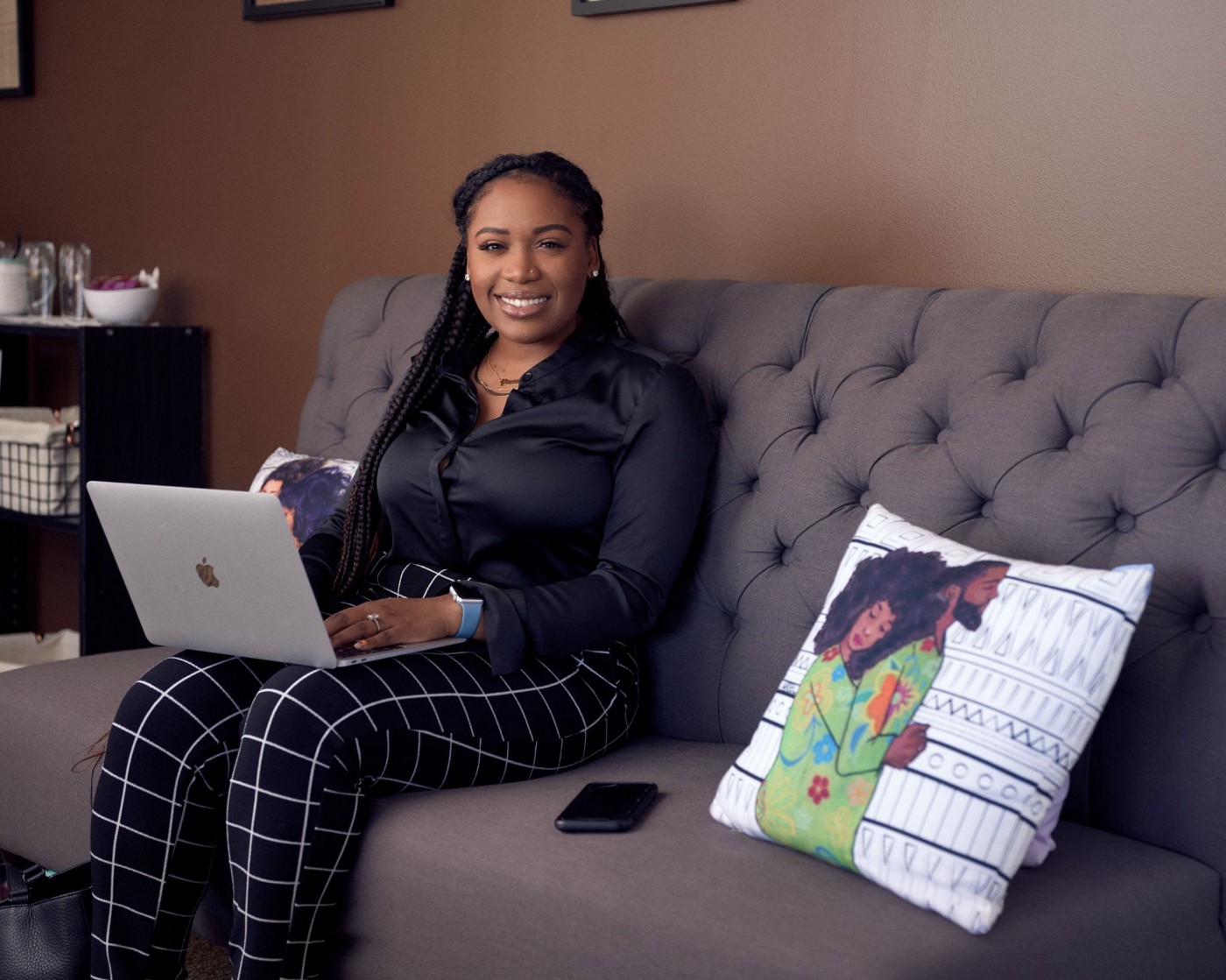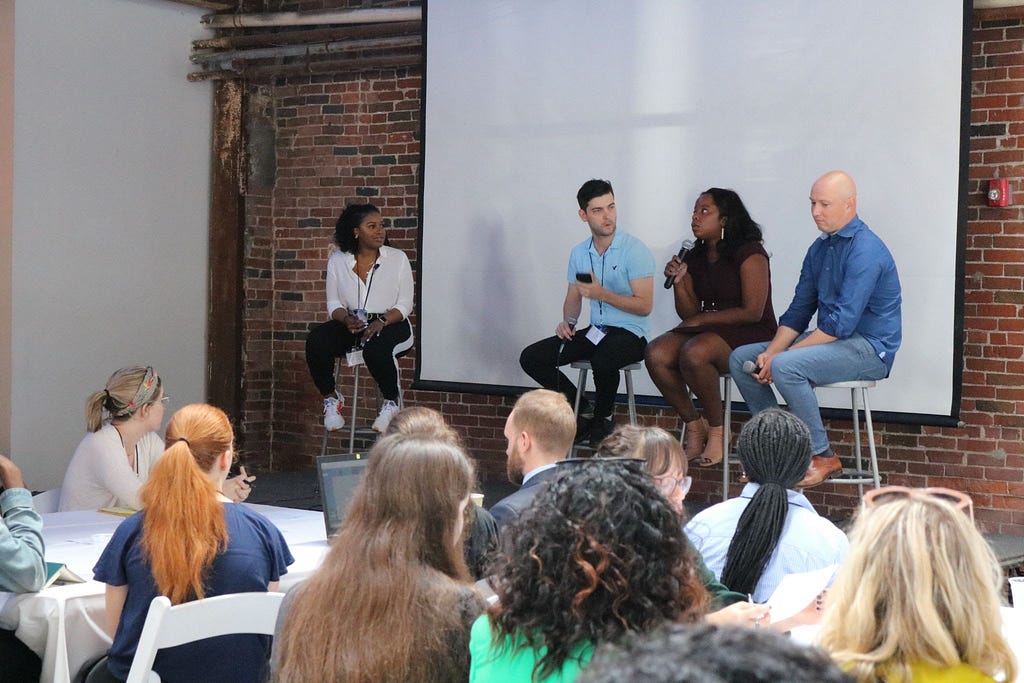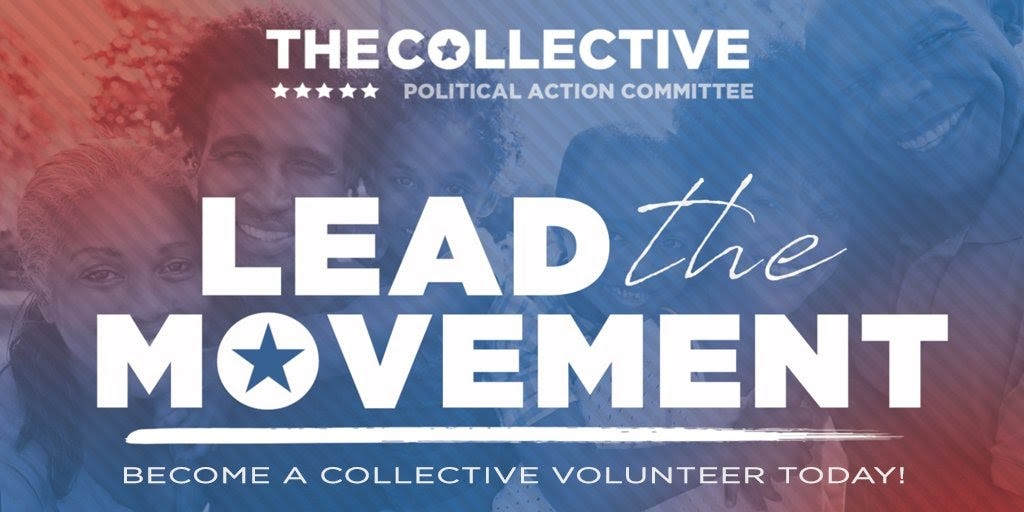
From a young age, Aneese Johnson, Principal Owner and Senior Strategist of Shaping Democracy, found her passion in politics. She developed her career in the field of political engagement and outreach with the Ohio Democratic Party, managing a statewide phone bank that made over a hundred thousand calls in the 2015 election cycle. She has achieved a strategic union of professions, spearheading digital marketing strategies in the political, nonprofit, and retail space. Formerly, Aneese served as the Digital Director of The Collective PAC, a group committed to building Black Political Power. In June, we met with Aneese over Zoom to hear more about her work and the innovative strategies she’s deployed at The Collective PAC.
The Collective PAC
In these unprecedented times, it is important to recognize champions of Black Political Power. During the 2020 Election, The Collective PAC brought historic change to the White House and Congress, endorsing Black political leaders like Cori Bush (MO-1), Jamaal Bowman (NY-16), and Mondaire Jones (NY-17), among many more.
JEFF: Can you tell us how you first got involved in political digital work?
ANEESE: I guess I always knew I was going to be in politics. I didn’t quite know where in politics I wanted to be, so I got my first internship with a lobbying firm and figured out very quickly thatI didn’t want to do that. And then I moved onto the Ohio Democratic Party and worked as an intern in their Finance Department. After a couple months, they hired me in their Political Department.
I ran their first-ever statewide phone bank. It was my first job, and it was actually really successful. We made over a hundred thousand calls for endorsed candidates across the state.
From there, I got the idea to create an app with my best friend. I knew I would have to hire someone to create the finished product, but I wanted to be versed in what was needed to get our app off the ground. So, I decided to learn how to do the wireframes myself and how to code. I just started doing all this research and taking classes on my own and going to tech events in the city. And then the Ohio Democratic Party found out, and they put me in the Digital Department, trained me on how to do digital, and I fell in love. I then went on from there to a political consulting firm, learning from my director who had been trained in the corporate sector on how to employ corporate tactics in politics.

In your experience, what do you think the political sector can learn from the corporate sector?
We need to learn how to micro-target! We need to craft our message for different audiences. You can’t just give blanket statements. ‘Yes, you care about healthcare’ — what in healthcare will resonate with your audience or resonate with this sector of your audience? That was one thing that I wasn’t really seeing on the political side.
We also need to learn to be more comfortable with testing. I am a big proponent of testing quickly, failing fast, and pivoting faster until you find what works for your audience. That’s how you know when something works, because although something worked for this candidate in this campaign, it may not work for the next candidate in a different city with a different audience and different voters.
Could you give us a window into some of the challenges and how you overcame them during the election season?
We were small, and we didn’t get a lot of resources, just because there were states that we really needed to win, like Pennsylvania and Wisconsin. Ohio is not there yet, but there was so much work that we did do in Ohio to really move us in the right direction for 2022. I didn’t have staff until the last three weeks before the election. So it was me writing scripts, writing text scripts, changing texts, changing phones, doing all things digital, committing ad plans, all that good stuff, in that short amount of time.
I am a big proponent of testing quickly, failing fast, and pivoting faster until you find what works for your audience.
Everybody in politics gets into this so that we can win, so that we can make progress and make change. And you felt that energy, you felt like things were finally changing and people were starting to realize that Trump was not the president we needed.
I really have to give a shoutout to my team! The Ohio team was really great. I loved everybody I worked with, and we got the job done. We didn’t win Ohio, but we’re definitely getting there in 2022.

How is The Collective PAC — and how are you — approaching 2021?
At the Collective PAC, we don’t believe there are any off years. Every election is an important election. And so we recently helped Tishaura Jones in St. Louis run her mayoral race. That was a really big race for us, and people don’t realize how much power mayors have.
Today is actually the New York primary, where Alvin Bragg is running for Manhattan District Attorney. And that’s an important race. We realize now that Attorneys General and District Attorneys have a lot of power. And we’ve seen that in Minnesota with Attorney General Keith Ellison. We’re always trying to educate folks and let them know that every single election is important, every single race is important. And it affects your life down from City Council all the way up to the Presidency.
Could you share a little bit about the Justice for All Initiative?
Our Justice for All Initiative is geared towards focusing on races that affect the justice system — our prosecutors, sheriffs, district attorneys, and judges, races where folks see the power that they have when we have these acts of violence, these acts of police brutality. Folks forget about that when it comes time to elect these people, that these are elected offices, and you can change the criminal justice system by changing the people there.
One thing we say at the Collective PAC is in order to change the laws, you have to change the lawmakers. And so every day we are trying to educate people to let them know that you do have the power to make change in this country, and you can do so by supporting organizations like The Collective PAC and the candidates that we endorse.
You’re supporting a ton of statewide and municipal candidates. Is that a deliberate strategy for building a deep bench of candidates with an eye towards future higher office elections?
We have realized that in order to feel change, you feel that from the local level. People think that the president is the person where you’re going to get all this change that they’re going to feel immediately. And it’s not, it’s your city councilperson, it’s your mayor, it’s your sheriff, it’s your attorney general, it’s your district attorneys or prosecutors or judges where you feel that change.
In our efforts to build Black political power across the country, you have to start at that local level and work your way up. And in order to get these sweeping changes like H.R. 1 passed, the George Floyd Justice and Policing Act, we do need a different Congress and a make-up that actually represents the United States that we see today.
Currently, 90% of all elected officials are white. 94% of prosecutors are white, and 83% of Democratic candidates are white. And that goes with the GOP, where I believe 92% of all candidates are white. And so they are not representing our America. That is the work of the Collective PAC, building Black political power and making us more representative.
In our efforts to build Black political power across the country, you have to start at that local level and work your way up.
This will be the fifth year anniversary of the Collective PAC. Our founders founded this organization in August of 2016, so we’ll be using our 5th anniversary as an opportunity to reflect on the work that we have done but to tell our story to more people about our work in building Black political power across this country.
How do tools like Action Network fit into the work that you do?
Action Network stood out because I did use it on the Biden campaign, but also the fact that there is a way to actually build engagement there. So your platform to call your Senator, to sign a petition, we’re utilizing those links and those platforms on our social media to get folks who are engaged on our social media accounts but are not in our email program to raise small dollar funds. And then we’re tagging these folks with interests that they care about. So folks who sign up for our health care petition only get our healthcare emails or support candidates who are strong healthcare proponents and things of that nature. So we’re using Action Network very strategically on different platforms.
After this summer that we experienced, where there were protests, people were really fired up and ready to make change. And that’s when we see an influx of supporters who really wanted to make a change and be involved in that change. And so that’s where we got a lot of those folks from.
VALERIA: How are you using digital tools to build engagement when oftentimes folks at the grassroots level do not have the access or time to sign petitions?
One thing that we’re recognizing, reviewing our analytics and metrics, is that video does better. We’re creating short videos that explain the process and who these candidates are and why they’re important. I was just editing a Justice for All video explaining why we decided to create this initiative and why it’s so important to spread this knowledge and get folks involved. That starts on a smaller scale, a more localized scale. And with that, we’ve been doing targeted advertising to educate them.

Could you share more about your strategies when microtargeting?
We know that folks aren’t a monolith. So when we’re targeting these people by really diving into the metrics. We recognize that by looking at the metrics, that you have to contact these folks a lot earlier, and then you have to test the messaging to see what message resonates. So testing colors that resonate, messaging, testing words, testing long form versus short form, doing all of that in order to reach people quicker, to test a lot of things, to fail fast, and pivot faster.